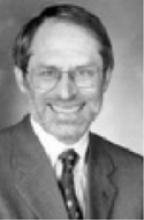The woods welcome me with a chorus of birdsong and a murmur of crickets as I make my way up the forest road. The sun is just chasing the shadows from the trees as I turn down the unmarked drive. These shadows bear the bantering voices of men shuffling to greet the day. “Hey, Doc—park right over there by the van.” I’ve arrived at the Mount Airy Forest Shelter for the Homeless.
One nurse gathers information in a shelter building, while another works with me in the van. She knows the routine well: forms and paperwork, pills and shots, making referrals for what is possible, counseling acceptance for what is not. It could be any suburban practice—hypertension, diabetes, headaches, and back pain—but for a few details: the fellow who looks like an accountant, save for the distant look in his eyes and the voices in his head; the man who is HIV-positive and hasn’t had care for well over a year. One patient is trying to cadge some Vicodin (“Yeah, I didn’t think you would give me any”), another needs treatment for a penile discharge (what’s the revised recommendation?), still a third wants some Cialis. Slyly, I ask why. He quickly informs me that he gets “off the hill” now, as he begins making the transition from the shelter to life “outside.” But what about the cost of Cialis? He is more cagey in answering this question. “A little of this, a little of that,” he replies.
While their stories are unique, the endings are remarkably similar: After abusing alcohol/crack/meth, and exhausting the patience of family/friends/acquaintances, there was nowhere to turn but the streets. For some, “up on the hill” is a refuge from the temptations of the city below, an escape from the noise of the crowded shelters, another last chance to shake the specters of the past. A place to contemplate the tatters of their lives and slowly resolve to put those pieces back together. The clipping on the van’s bulletin board—a yellowing photo and story about a shelter worker who was herself homeless—is a testament that some actually succeed. As the morning draws to a close, I ask the nurse how many of the patients complete rehabilitation. She guesses 30% or 40%. Most will slip somewhere. But still, there is a chance.
I still don’t know how I feel about my experiences with the homeless—embarrassed that we can’t do better? Guilty that I can return to a comfortable home? Displeased I don’t do more? It is difficult to summon a simple answer.
Today, as I return home from weekend chores, I see a slightly disheveled man at the end of the exit ramp. His crude sign reads: “Homeless. Please help. God Bless.” Sure, I could spare a few bucks. Or maybe you could help dig my new patch of garden? Hey, I know a place where you can get 3 meals a day and free medical care. My reverie dissolves at the sound of a horn proclaiming the green light. I rush forward to hurry about the rest of my day and I don’t look back.


